Unprocessed FAQ: Flours & Grains
Sep 26, 2019
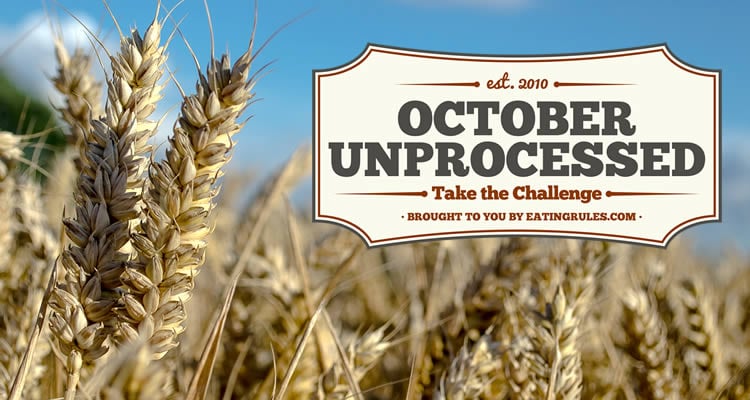
In today’s October Unprocessed FAQ, I’m going to try to clear up some confusion surrounding one of our most common ingredients: Flours and grains.
“Intact” Grains
Although you probably won’t hear “intact” very often when it comes to grains (it’s not common on labels), it’s the best word I’ve found to describe them. The idea is that it’s the whole grain, completely intact as nature made it — it hasn’t been cut, ground, or pulverized in any way. When you buy a bag of whole kernels of barley, wheat, rye, farro, kamut, spelt, teff… all that’s been done to it is that it’s been harvested, cleaned, and dried (and, if it’s not organic, probably sprayed with pesticides). You could do all that at home (though it’s probably not worth the effort!), so those totally pass the kitchen test.
“Whole” Grain
Anything that includes the entirety of the grain — the bran, germ, and endosperm — can be called “whole grain,” even if it’s been ground up (or even separated and put back together). Steel-cut oats, for example, would be whole grain, since they start with intact oats, and then cut them with steel blades. (Here’s more on oats and oatmeals.)
Here are some of the things to watch out for on labels when you’re shopping for whole grain products.
“Whole Grain Flour”
This is really just taking the grain and grinding it down even more, until it’s a fine powder. For it to be called “whole,” it still needs the bran, germ, and endosperm — though technically, it’s legal to separate all the components and then put them back together.
In a previous October, Cassidy from Bob’s Red Mill shared a very informative post about flour — it’s well worth the read.
Refined Flours, or simply: “Flour”
It’s safe to assume that anything called “flour” without the word “whole” preceding it has been refined — it’s lacking the nutrient-rich germ and bran. It might be called “All Purpose Flour,” or “Unbleached Flour” or simply, “Wheat Flour.”
By law in the United States, unless it’s certified organic, manufacturers are required to add back in some vitamins, because the refining process strips them out. In Canada, even organic flour must be enriched.
Theoretically, you could grind your own grains at home, and then take the resulting whole grain flour and pass it through finer and finer sieves, until you’ve sifted out all the bran and germ, leaving just the light endosperm. You’d probably never do it, but in theory you could.
To bring this back to the Kitchen Test, then: Strictly speaking, “unbleached, unenriched flour” will pass the test. (That does not mean I’m suggesting you eat it.) But if it’s been bleached or enriched — two things you wouldn’t do at home — it doesn’t pass the test.
Watch out for the “Wheat Bread” trick that many companies and restaurants play, trying to make you think it’s healthier than any other bread. All it means is that it’s made with wheat flour, which is most likely refined. Your best bet is to get “100% Whole Wheat Bread,” and short of that, seek out “Whole Wheat Bread.”
“White Flour” and “White Whole Wheat Flour”
This is very confusing. Most flour (whole or refined) these days comes from a species of wheat called “red wheat.” If you buy a bag of white flour, it’s probably been milled and refined (and bleached) from red wheat. However, “White Whole Wheat” refers to whole wheat flour that comes from “white wheat,” a different species.
So regular wheat flour probably comes from red wheat. “White Whole Wheat Flour” actually comes from white wheat. Got it? (If not, check out this on Wikipedia.)
Recently, Bob’s Red Mill rebranded their “Organic Hard White Whole Wheat Flour” (pictured above) as “Organic Ivory Wheat Flour” – I’m guessing to help reduce some of this confusion.
Matty and I prefer using White (Ivory) Whole Wheat Flour at home, because it’s a little bit less dense than the red wheat, so it makes a slightly lighter loaf of bread (or pizza crust!). Both Red Wheat and White Wheat have effectively the same nutrition, so that’s not really a concern.
“Sprouted” Grains
Grain kernels are actually the seeds of a plant–so sprouted grains are simply seeds that are starting to grow (nowadays, that means they’ve been deliberately germinated). They’ve become popular recently because they’re more easily digestible and nutritious. I’m not convinced there’s a huge health benefit–but I also don’t think they will hurt, and may indeed provide at least some benefits. I’ve also found that store-bought breads that promote the fact that they’re made with sprouted grains are more likely to be healthier overall and pass the kitchen test (such as Ezekiel 4:9 and Alvarado Street Bakery), so I usually pick those up from the shelf first.
(Sidenote: Watch out for raw alfalfa sprouts and bean sprouts, like you’d find on a salad bar – unfortunately they’re now a common source of food poisoning. That’s not an issue with grains, which you’re going to cook anyway.)
White Rice and Pearl Barley
White rice is a common question — it’s basically brown rice that has had the outer layers of the grain removed, or “polished.” The question then becomes, can this be done at home, at least in theory? I found this forum post that shows someone doing it at home, and you can even buy a countertop rice polisher on Amazon (looks like they all ship directly from Japan, which sounds about right). I think the process is similar for pearl barley. So I’d say that this does pass the test… of course, from a nutritional perspective, I think we’re better off eating brown rice instead.
Quinoa
While technically not a grain (it’s a “pseudocereal” since it’s not a member of the grass family), for our purposes it might as well be. Quinoa (pronounced “keen-wah”) is great stuff: high in nutrition; a wonderful, nutty flavor; and great hot or cold. Here’s how to make fluffy quinoa.
Gluten-Free Flours
Carrie Vitt wrote a guest post during a previous challenge, outlining many of the gluten-free flours and grain-free flours that have flooded the market in recent years, so definitely go check that out if you’re wondering about those.
Applying This Info for the Challenge
100% Whole Grain Flour and unbleached, unenriched flour both pass the kitchen test. Bleached and/or enriched flours do not. So read the labels, and eat accordingly!
—
Did I miss anything? Let us know in the comments section below.
If you haven't taken the October Unprocessed pledge yet, please do! And then encourage your friends to join in -- it's a lot more fun that way!
Wheat © 2014 Brad Higham.
Jars of Whole Grains © 2014 Annie Corrigan/WFIU Public Radio.
Bobs Red Mill Organic White Whole Wheat Flour © 2009 Sarah Gilbert.
Sprouted Wheat Berries © 2010 Veganbaking.net.
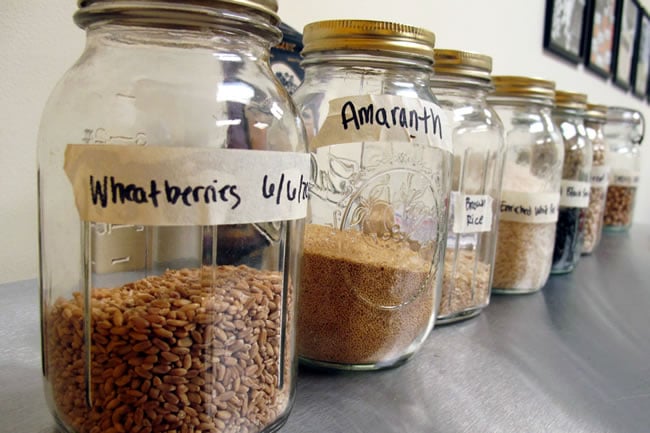
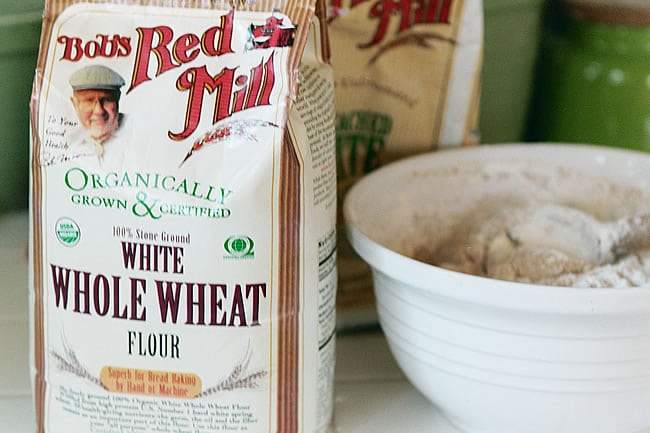
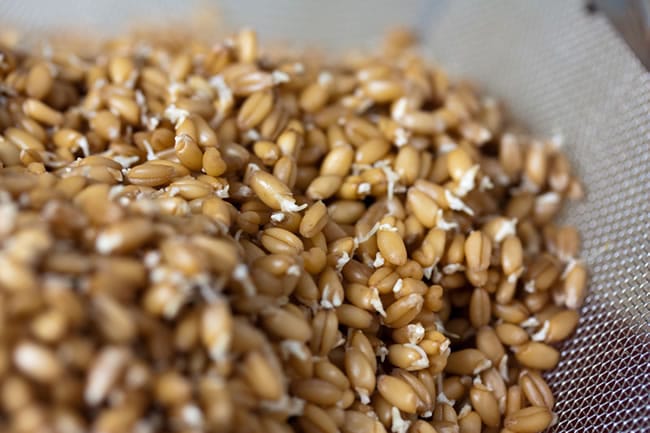
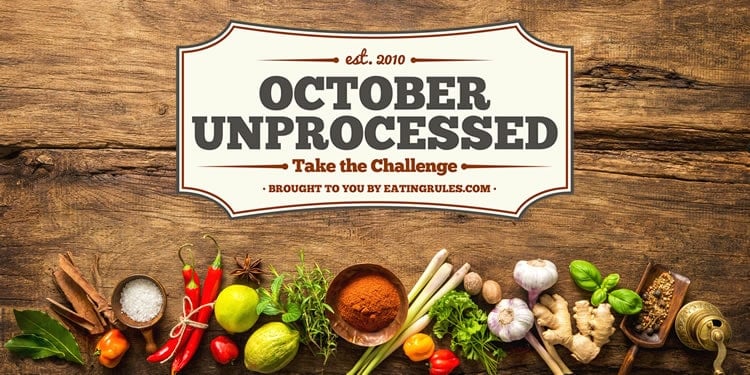
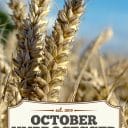

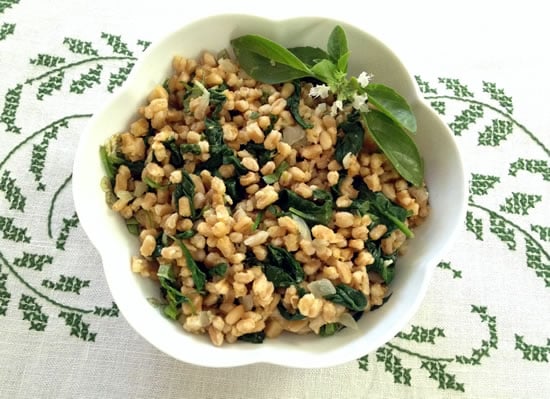


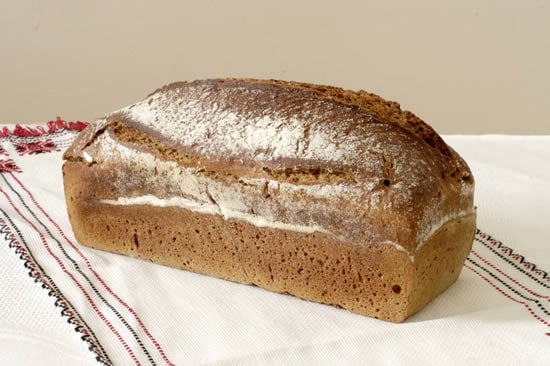





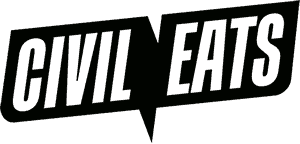









What about gluten free flours? Brown rice flour, potato starch, tapioca starch?
Brown rice flour is ground-up brown (whole grain) rice. Potato flour is ground-up dried (probably peeled) potatoes. Corn MEAL is ground-up dried corn. Potato and corn STARCH is a separated-out item. If you soak or par-boil potatoes (as some recipes recommend before frying them)the starch will precipitate out, you can strain it out and dry it. So, technically it passes the test. Corn starch I don’t know about – if it’s arrived at by sifting the cornmeal, you’re golden, but I don’t know. Tapioca can be called EITHER flour or starch, and appears to be the ground, dried whole product, either way. I use oat, sorghum and tapioca flour, and potato flour AND starch, in my gluten-free crackers and cookies. Apparently, you have to have some starch as well as the higher-protein flours to get a good texture, and a little starch isn’t unhealthy, anyway, if you have enough veggies… Read more »
Well, I was half right about tapioca. It’s been used, safely, for several hundred years by people with no *industrial* food-processing capabilities! That certainly means it passes my “kitchen test.”
It comes from cassava root, which must be ground and fermented, or otherwise “processed,” to neutralize naturally-occuring cyanide, then can be cooked and eaten. The starch is extracted about the way potato starch is.
http://en.wikipedia.org/wiki/Tapioca
http://en.wikipedia.org/wiki/Cassava#Farinha_de_mandioca
Im gluten intolerant so….yeah, Right now the Paleo lifestyle is what works for me. No Wheat for me! Technically it bad for everyone, even people who can tolerate it.
Hello Andrew,
I am allergic to gluten and use quinoa, coconut, brown rice flour, are these acceptable for the challenge?
You can grind all those at home! 🙂 I’d say they count without an issue. They are whole “whole-grain” flours.
Hi Elena! Yep, I think this are all okay — since you could (theoretically, at least) grow/make them at home. Welcome to the challenge! 🙂
Ahh, looks like Sarah beat me to it. Thanks Sarah!
What about Bob’s Red Mill GF all-purpose flour? It has been my staple…
What about grains that aren’t whole, but aren’t in flour form? For example, what about pearl barley? Or white rice? It seems like refined flour is technically okay (unbleached, but sifted to only the endosperm), but I’m not sure if the lack of bran and germ is okay when you aren’t in flour form. Does this make sense?
Hi Annie! Good question. To apply the kitchen test strictly, you’d have to be able to remove the outer layers of the grain (for rice, it’s called “polishing”). The question then becomes, can this be done at home, at least in theory? I just found this forum post that shows someone doing it at home, and Amazon.JP actually sells home rice polishers! I think the process is similar for pearl barley.
So I’d say that this does pass the test.
Any suggestions on your favorite brand of flour?
Hi Lacey! I’m partial to Bob’s Red Mill products. I’ve personally toured the mill in Oregon, and they’ve been a wonderful supporter of my blog.
http://www.eatingrules.com/2011/09/visit-to-bobs-red-mill/
We’ve also had good success with Trader Joe’s White Whole Wheat Flour. King Arthur Flour is another popular brand.
I’ve found that most areas where I’ve cooked and baked usually have a regional or local farmer’s coop that produces good grade whole wheat.
I have ground & sifted my own wheat. The resulting bread was inedible. The birds wouldn’t even eat it!!!
Oh noes! Any idea what went wrong?
My advice on baking with home-ground flour (of any kind) is to look up what a cup should weigh, then weigh the flour, not using cup measurements. The flour tends to be denser and can really pack in a measuring cup, leading to dense, heavy breads. At least that is what I have noticed.
I agree, Sarah. We’ve been grinding our own flour for several years now and ALWAYS use a digital kitchen scale to weigh the flour rather than using a measuring cup. A good reference is the Laurel’s Kitchen Bread Book – it even gives trouble shooting hints for those loaves that just don’t ‘work out’.
Have you ever tried baking bread with self made sourdough?
Whole Wheat Flour, water, salt, one teaspoon honey – the most natural way to get delicious bread. Since I tried first, I stopped buying bread. But be careful! It`s infecting! Everybody, who tasted once, started baking sourdough bread afterwards – my neighbour, her sister, my daughter, all the students`flat-sharing communities in her house, my former boy-friend…
It`s true sourdough bread takes some time, but not your time.
Sourdough is a bit of a loner, concerned with his own interests.
So just leave him alone. Things will turn out perfect.
Everybody, who is interested:
I could send you a recipe, that works 100%
(just write here, or send me a note to facebook)
Hi Andrea! I’m a big fan of sourdough, and have been nurturing a culture for just over a year now. I’d love your recipe for bread that works 100%. Thanks!
Andrea,
I’m doubtful you’ll get this message since it is years after your original post. But if by some chance you do receive it, I’d love to get this bread recipe if you’re still willing to share it.
Katie
I would love your recipe please!!
I would love your sourdough recipe
When I ate grains; I would have to regrind the grains until they were very fine and make & use a sourdough starter. The bread was still dense but it was yummy.
i’m so sorry, lp j, but i laughed me head off @ your comment! x^D
thank you for this printed and in a folder waiting for more info :)))))))
Can we talk about gluten free flours? Like brown rice flour, white rice flour, corn starch, tapioca starch, etc. that those of us who don’t eat wheat would be using?
Interesting, as all of the gluten free products are far more highly processed than most wheat & grains. Curious to see the response to this.
ditto, kate! i just began learning about that, myself, much to my dismay. what is a person to do?!
These posts may help:
https://eatingrules.com/gluten-free-flour/
https://eatingrules.com/gluten-free-flours/
We love White Whole Wheat Flour. It works as well as all-purpose. Apparently, Trader Joes has the best price.
Out here in Wa state, TJ’s sells it for $3.49 a 5 lb bag. Not bad pricewise.
I was finally won over to whole wheat when I found the white wheat. It is so much better tasting and delicate. I grind mine from the berries 🙂 Excellent article!